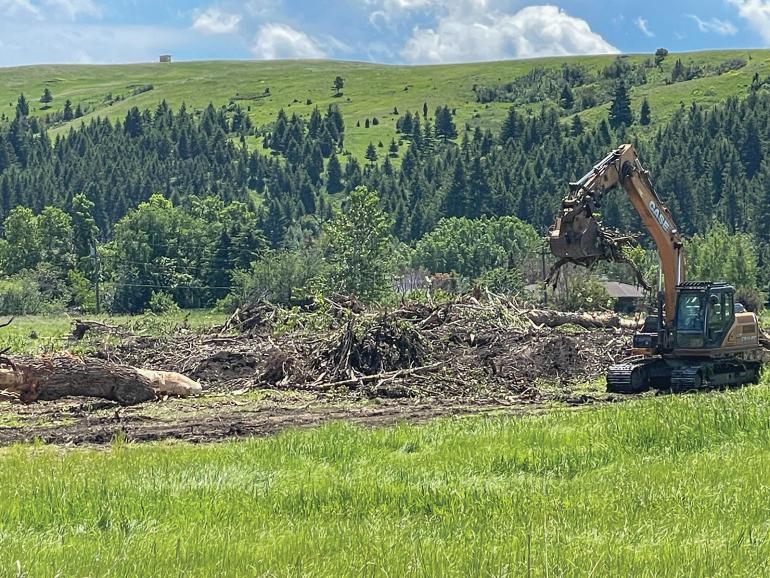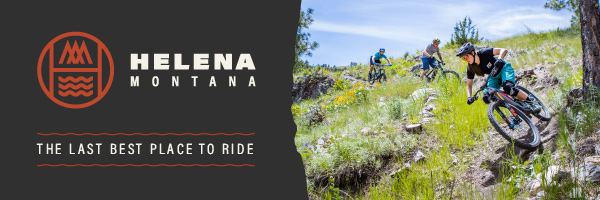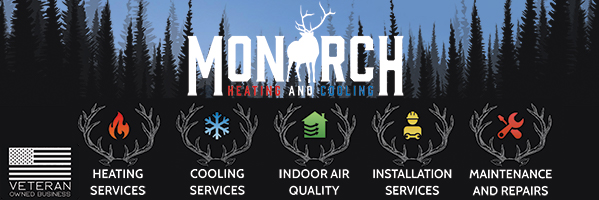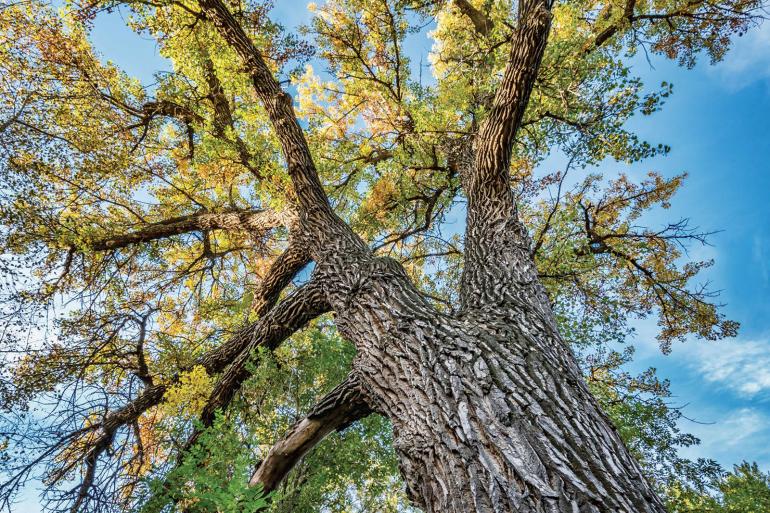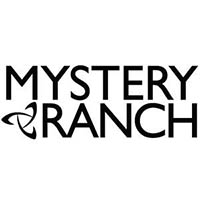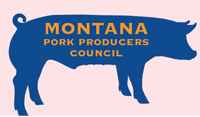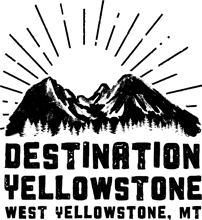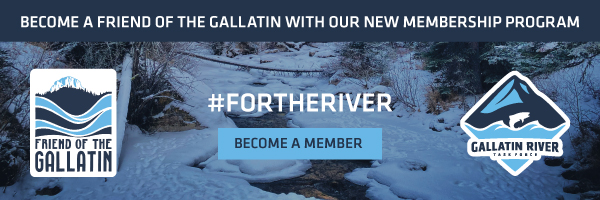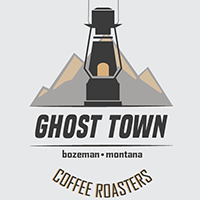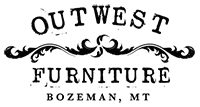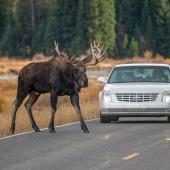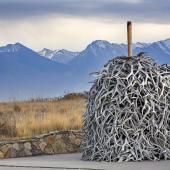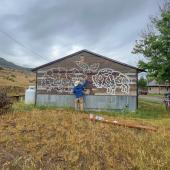Uprooted
Fighting for Bozeman’s urban forest.
If you’ve ever lived with a ten-year-old, you’ll understand the simultaneous parental cringe and pride when your kid blurts out, “That’s stupid!”—and you couldn’t agree more. That’s how my son replied when he first heard about the impending removal of 140 mature cottonwood trees on a 24-acre site known as “Canyon Gate,” a development project brought on by Andy Holloran and HomeBase Partners.
Annexation and recent zoning changes led to this major residential-commercial enterprise at the gateway to Bridger Canyon. Currently, 470 dwelling units and 40,000 square feet of commercial spaces are erupting on the northeast corner of Bridger Drive and Story Mill Road. Apartment buildings and parking lots are being constructed precisely where the now-perished cottonwood grove once stood—despite existing city code, development plans, substantial public comment, and the imploration of a City Commissioner to retain at least some of the trees.
Bozeman’s Municipal Code is meant to provide fixed guidelines on how we, as residents and developers, conduct ourselves. But it only works when nothing is left to interpretation—and when the code is actually enforced.
If you want to understand how this many trees could be lopped in one place, watch the video recordings of City Commission meetings. Start with April 18, 2023, which captures a gross misunderstanding related to native-tree preservation. Our mayor, Cyndy Andrus, states: “I like trees. They grow up, they die, we plant new trees. I don’t mean to be cavalier about it, but I just think—I recognize that, you know, those riparian zones can... add to a landscape, but I also think there’s new ones to be created and that’s what we’re doing in this development.” As if planting new trees won’t take decades to replace what was lost?
And, from HomeBase’s landscape architect: “[Cottonwoods] drop a ton of material. They’re a maintenance headache.” This distaste for the species’ self-pruning phenomenon, known as cladoptosis, has robbed local kids of a natural, safe, and shaded place to play, and the rest of us of an aesthetic and community asset. If my preteen can recognize the foolishness of squandering trees (and the ecosystem services they provide), then how is it that adult professionals cannot?
Bozeman’s Municipal Code is meant to provide fixed guidelines on how we, as residents and developers, conduct ourselves. But it only works when nothing is left to interpretation—and when the code is actually enforced. Chapter 38 of the Unified Development Code deals with all new development in the city. It states that developers must “describe measures to preserve trees and critical plant communities,” or else obtain a waiver. In the case of the Canyon Gate cottonwoods, there was neither preservation nor a waiver.
Another section states that “The design and development of all land uses must be properly related to topography, and must, to the extent possible, preserve the natural terrain, natural drainage, existing topsoil, trees, and other existing vegetation.” Of particular importance is the clause, “to the extent possible.” It’s a loophole—negating the entire purpose of the code to begin with. As it stands, this clause is merely giving the false appearance of care for the natural environment. When the planning-review department admits they are not enforcing a code (which they have done), it’s time—past time—to replace it with non-subjective, easily enforceable language.
Now let’s look at the Bozeman Community Plan, which is said to reflect “the community’s shared values and priorities.” Early in the plan, a graphic depicts the holistic concept of “A Resilient City,” with “Infrastructure, Economic, Community, Watersheds & Natural Resources, Housing, and Health & Social” all interconnected; none ranking higher than any other. Additionally, the plan states, “And while Bozeman residents value and enjoy many forms of outdoor recreation, community members also understand and appreciate the need for maintaining and protecting the natural resources that support a healthy ecosystem.”
It continues, “Smaller species, especially birds, are compatible within urban density development and should be preserved, including the encouragement of suitable habitats.” Cottonwoods are important bird habitat; they host beneficial insects, along with providing cover and nesting sites. According to Montana Audubon, cottonwoods provide habitat for more than half the bird species in Montana.
The City Commission needs to hear this loud and clear: it doesn’t have to be a choice, one or the other. Housing and trees can coexist.
Yet, on August 1, 2022, the man with the plan to bulldoze the cottonwoods made no mention of avian species in a letter to Montana Fish Wildlife & Parks (a requirement of Bozeman’s preliminary plat process)—and worse, no one said, “Go back and do your homework.” Thus, the requirement of writing to FWP feels like a charade—it would appear that FWP has no authority over municipal development, and works at a much different ecological scale than individual subdivisions.
The city codes and community plan sound nice, but appear to be preferential to the development sector, and detrimental to natural resources such as trees and birds. The City Commission needs to hear this loud and clear: it doesn’t have to be a choice, one or the other. Housing and trees can coexist.
Why is it that the plans and codes aren’t being implemented or enforced? Why are groves of existing, native trees not being protected? Is it an ecology education issue? Is it a training issue? Overwhelm? Indifference? Money? Fear that codes are not strong enough to hold up in court? Whatever the reasons, we have the responsibility to do better for our city.
If this destructive behavior happened only at Canyon Gate, we might brush it off as an unfortunate incident. However, scores of other native trees have been hacked down at other locations across Bozeman and near its boundaries, including lots near South 19th, Goldenstein Lane, and Fowler Lane. To make matters worse, the trees were destroyed in June, when birds may have already been tending nests—a blow to our avian populations, and also a possible infringement of the Migratory Bird Treaty Act of 1918, if the aggressors failed to receive a permit.
We must not take existing native trees for granted.
Even if you don’t give a hoot about birds, think about the cumulative ecological impacts of urban deforestation. The Bozeman Climate Plan (yes, another plan) talks about “protecting existing trees” and aims to “ensure a healthy and resilient urban forest.” It says that we should “manage land and resources to sequester carbon” and “incorporate trees and green infrastructure to mitigate potential urban heat-island impacts.” Saving existing tree canopy wherever and whenever possible is a no-brainer approach to achieving these goals.
Our codes should unambiguously protect existing trees as soon as a property is annexed into the city. This way, we could see which existing trees align with future public property, such as the areas between sidewalks and streets, and should therefore be subject to standards under city Environmental and Health ordinances (chapter 16 of Bozeman’s Municipal Code). In addition, we need to recruit and support architects who value native trees and incorporate them into large-scale plat designs and finer-scale site plans. Aesthetically speaking, trees add a lot to a homesite, and it behooves us all to protect them—regardless of whether they fall on public or private property.
We must not take existing native trees for granted. With our unprecedented rate of development, protecting and expanding Bozeman’s urban forest calls for more robust and enforced regulations. Thankfully, nonprofit and citizen partners are already contributing expertise and passion to this effort.
Call upon the Bozeman City Commission to only accept environmentally-responsible development. Vote for candidates who will prioritize the strengthening and enforcement of codes to preserve existing trees.
And, as my kid is still questioning, so should you: “Why did they bulldoze the cottonwoods at Canyon Gate, and why was that better than keeping them up?”
Angie Kociolek is a longtime Bozeman resident and the chair of Bozeman’s Urban Parks & Forestry Citizen Advisory Board, but the views expressed herein are solely her own. Get in touch with the City Commission and citizen advisory boards by emailing [email protected].
Curbside Composting
by Jamie Rankin
When it comes to environmental issues, we’ve all heard that little voice in our head: What difference can I make on my own? Well, newsflash: Happy Trash Can Compost collects 40,000 pounds of compost weekly from Bozeman residents. Extrapolate that to other conservation programs, and the result is that we are each contributing our own small part to something big.
Food waste is the number-one component of landfills nationwide, making up 24% of all waste. And when kitchen scraps, yard clippings, and plant remains are buried in landfills, it forces them into anoxic decomposition, causing methane—a potent greenhouse gas—to be released.
By composting food and plant waste instead of dumping it in the trash, we can reduce methane emissions and minimize the strain we place on the atmosphere. In the presence of oxygen, food waste decomposes naturally with the help of insects, bacteria, and other microorganisms. The result is a composted soil packed full of essential nutrients. It’s also better able to retain water than standard soil, which promotes healthier plant growth.
Fortunately for us here in Bozeman, Happy Trash Can has made local composting easy. Don’t want to lug around a slop bucket? Sign up for curbside pickup service. Don’t have a huge budget? Pickups start at $15 monthly, or you can drop it off at a pay-what-you-can rate. Don’t want to sort your food scraps? That’s okay, because you don’t have to. Happy Trash Can accepts all food waste: meat, bones, dairy, compostable-labeled items, and even dryer lint and paper towels.
If you haven’t already, silence that pesky voice in the back of your head, and get yourself one of those green-and-white curbside buckets. Together, we can make a difference.


